2025 – CHW
Mahonia x savilleana – Clone 7 – is at least growing away with new growth unlike the other plants of this cross (2019 planted).
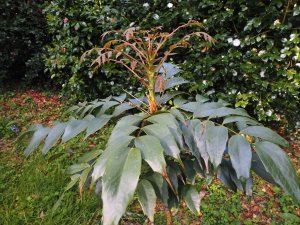
Scented Rhododendron tour today with 8 people. Only 4 wanted the lecture so we compromised.Last year’s drought has resulted in many dead flower buds on Rhododendron megacalyx. The few flowers left will not be out for a bit yet. New growth visible today only where there are no flower buds.
2023 – CHW
Coronation day here on a drizzly, overcast day with mist and sea fret. Perfect growing weather for the garden but not perhaps the weather that King Charles III would have chosen for HIS big event!
10 signets have hatched off on the lake and the parents allowed us to see them for the first time today. They look a few days old already. Last year only 1 of 7 survived. This pair of swans are breeding for their third year here and are clearly getting the hang of it now. A much earlier hatch off than previously. Lets hope the otters don’t get them all. Interesting that the pair headed off last autumn for a couple of months and took their one surviving signet with them. He came back with them but they never allowed him near the lake and, after a week or two, pushed off.
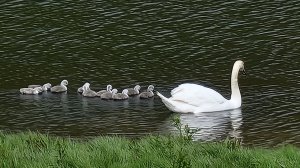
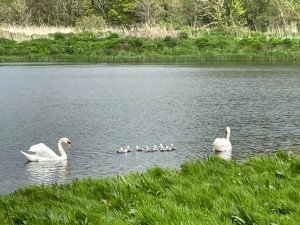
Jaimie sends me this picture of a blackbird nesting for the third year running in the same place in ivy behind a Callistemon rigidus (as you can see from the gnarled seedpods). Lots to be said for magpie control with Larsen traps in his garden. The chicks have in fact hatched and both parents are feeding them. Vermin control is the secret to the survival of songbirds but that is, ‘naturally’, a politically incorrect statement to those who want corvids and raptors to wipe out all smaller birds in our countryside.
After the showers the poplars (left) and oaks in Old Park provide an exciting colour contrast.
The news that Hiscox, the insurer who everyone was supposed to like and trust, has refused to pay out on the very few (10,000) business interruption policies which clearly do cover COVID, makes one wonder. The policy wording seems crystal clear and I assume the courts will uphold any challenge from policy holders. Why then are Hiscox playing hardball? One suspects that they fear the government may force them to pay something to all policy holders who have business interruption cover (which does not cover COVID) but no business. At the very least they could refund part of the premiums paid to those whose business has been permanently closed/interrupted as their policies are largely irrelevant now. Fat chance but the estate will try to avoid dealing with Hiscox in future.For once a BBC journalist has a scoop which is outside their normal journalistic line. The Iranians were flying scores of planes from China during the last two months despite pretending they were not. Many of the passengers were then flown on to other Middle East destinations thereby spreading COVID far more widely to other Arab countries. The BBC have seen the passenger lists and spoken to some of the infected. Nice to know that the long arm of China was yet again encouraging its allies to break the lockdown and spread their homemade disease. I wonder how the London Chinese ambassador’s rather pushy spokesman will be able to lie his way out of that one?Crinodendron hookerianum in bud already – three week early.
2019 – CHW
To the Coach House to view Tony & Carolyn Townsend’s developing garden. In the six years that I have known it the transformation is impressive. The high hill was once a mass of ponticum and trees. Now it is becoming a woodland garden of note despite squirrels, sitka deer, munjac deer and rabbits which mean everything has to be fenced and protected not just plant by plant but area by area with many gates.
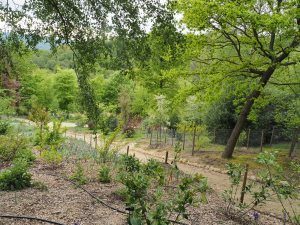
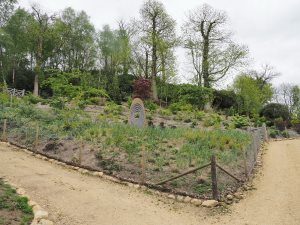
The Rockery is looking splendid in the early morning sun.Rhododendron reticulatum is only out in parts but still early into flower. Despite the very cold spring it has held onto quite a lot of its leaves. Last year it was completely deciduous at the same stage.
At last a flower on one of the three plants of Enkianthus campanulatus ‘Wallaby’ which is a dwarf. I think we may have seen an odd flower on a small plant in the nursery at Burncoose but it was red (I think). Perhaps it will change colour when full out but pretty ‘wishy washy’ here.
A trip to compare the bark on some betulas planted in only 2008.Azalea ‘Fedora’ is just full out on the drive while the Azalea ‘Amoena’ opposite, which has been out for weeks is now over. Normally the two would overlap.
An interesting birch display above the drive where their mainly white mature trunks will one day show up well as you go past.
So what do we conclude from this lot? ‘Silver Shadow’ and ‘Maurice Foster’ have grown the quickest. ‘Jermyns’ has the best white bark colour at a very young age. More importantly, I have undoubtedly undertaken this exercise at the wrong time of the year when the bark on young trees is only just starting to peel to reveal the best colours.
None are perhaps yet as spectacular as Betula albosinensis ‘Bowling Green’ and ‘Chinese Garden’ (the two Werrington wild collected original ferns) or, indeed, the newly named ‘China Ruby’. I have featured the Werrington plants now growing here in earlier blogs and you can easily search them out.
Now off to Wisley for the RHS centenary rhododendron show with the Crawshays and Thomas Methuen-Campbell. A fairly liquid trip I expect with the odd rhododendron thrown in!
2015 – CHW
Reports of ‘a dog’ chasing the young Saler cattle heifers in the Outer Park above the beach. Others say the white animal with the cattle is a calf! The telescope reveals that it is in fact a stray sheep which has escaped and taken up residence with its new friends. As the young cattle have only recently been let out of their over wintering sheds they are naturally frisky and the solitary sheep has enjoyed running about with them. A year or two ago stray dogs did drive some cattle over the cliff and our visitors have generally no idea of the damage that free range dogs can do. We have also lost several sheep mauled by dogs in the Park.
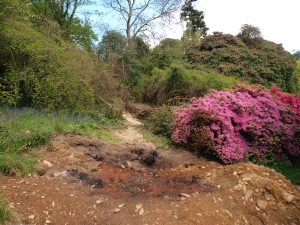
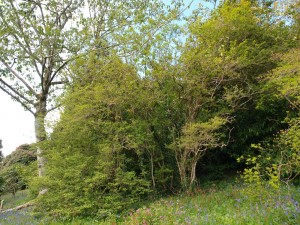
A fir tree which fell in the horrendous gales of February 2014 has finally been cut up. Jaimie’s team can now cut back the laurel swamping the original Symplocos paniculata. We need to consider too if the ancient deciduous azaleas here are worth keeping or whether to cut them down and dig out. A nice bank for some new large growing colourful rhododendrons. Perhaps cut down the Cornish Reds to reshoot too as Tregothnan have done so successfully. After inspection the azaleas can all go to make room for new planting.
Nearer the house there are a few good plants:
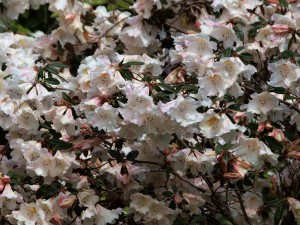
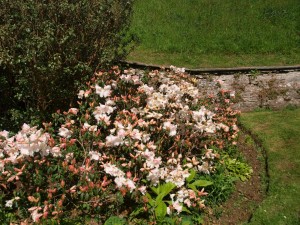
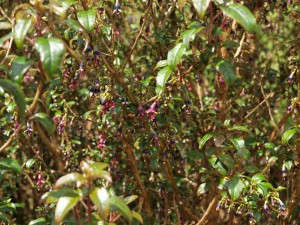
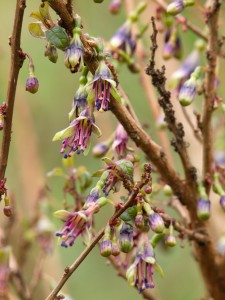
– What better for the front of a border by the castle than the highly scented Rhododendron ‘Fragrantissimum’ / ’Lady Alice Fitzwilliam’. The two plants are pretty similar and both Rhododendron edgeworthii x Rhododendron formosum. The backdrop here is Fuchsia excorticata which has been in flower since mid-January.
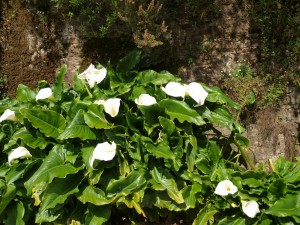
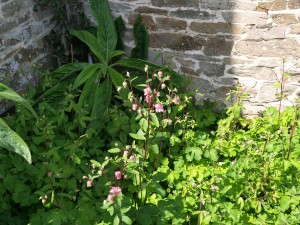
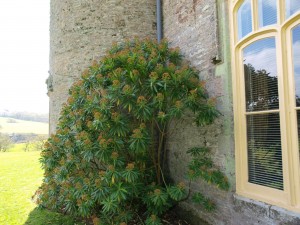
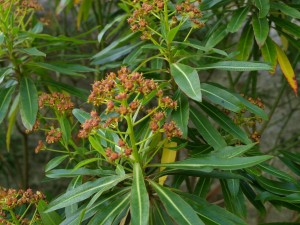
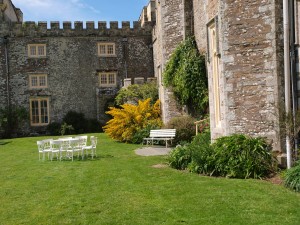
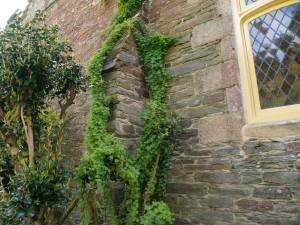
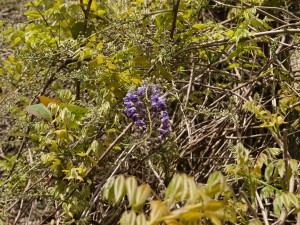
1979 – FJW
Nothofagus (see 5/5/63 entry) still ok. Winter days and still frost at night. Beech leaves late in coming.
1933 – JCW
I saw the first Fuschia open. Much as in 1933.
1931 – JCW
Very much like 1924. The big cherries are over but several of the new 3 to 4 year old Japanese ones are flowering. Magnolia kobus is very good. Several hybrids are well open i.e nigra, Brozzoni, alba, superba and speciosa etc. Falconeri is just opening. Auklandii is very good, much of it is to come.
1924 – JCW
The first Magnolia Wilsoni was open. The cherries of all kinds have been hurt by the heavy rain, the first heavy rain since Christmas. The Augustinii and many forms of Triflorum are excellent. Falconeri just opening.
1922 – JCW
The fat cherries are very good. Davidsonianum nice. Calophytum half of them open. Fastigiatum impeditum lot good.
1915 – JCW
Probably the best day of the year for bloom here, and the Auklandii’s are an easy first with the Rookery Cherries next, R alpanicum is nice and the Oarbiculare are very good indeed.
1911 – JCW
Bardon just open some, Clematis m rubra half open, ⅔ of the cushion iris, ½ Campylocarpum, white Thomsonii going over, R keysii very good. Auklandii ⅓ open.
1903 – JCW
Picked a bunch of I Pavonia to send to Dinton. Not one good pod ripe yet.
1902 – JCW
A lot of Bardon del under the big wall, picked Luciana three days ago, moved Southern Star, foliage nearly dead.
1901 – JCW
Some (two or three) nice roses, Maples began to look well.
1900 – JCW
Picked the first Lortetti, and one or two good roses.




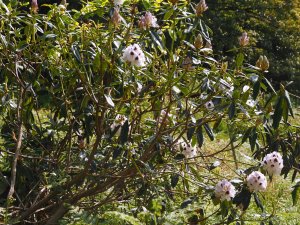
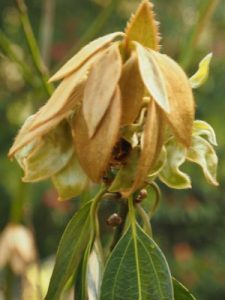
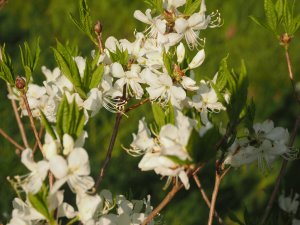
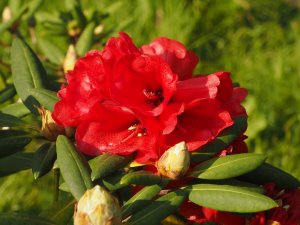
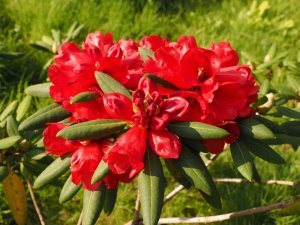
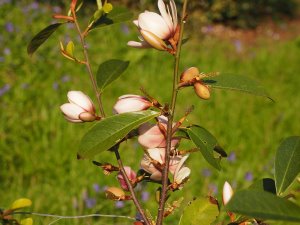
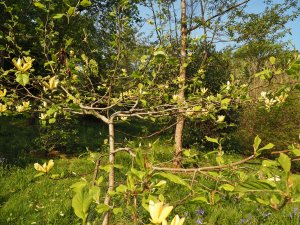

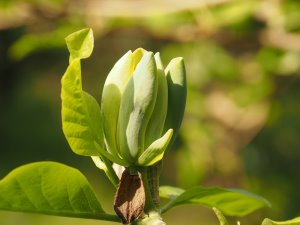
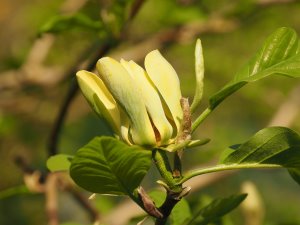
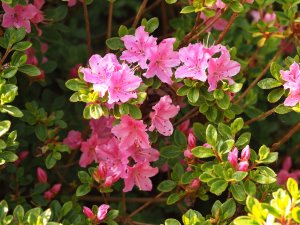
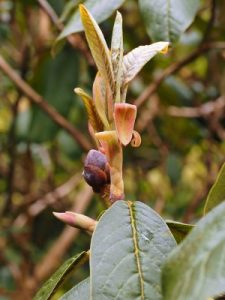
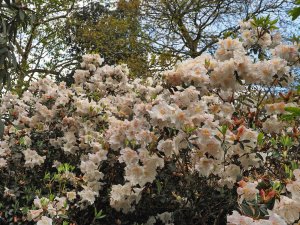
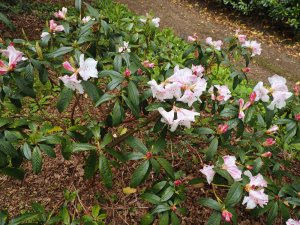





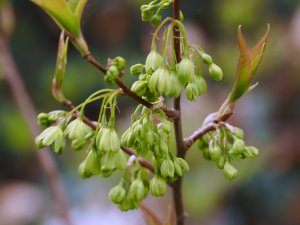

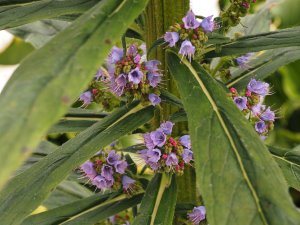
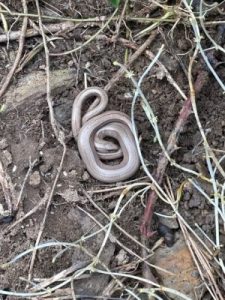
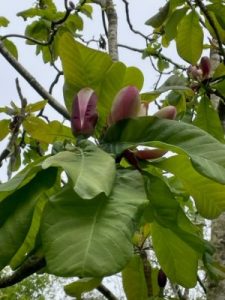
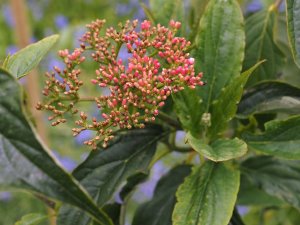
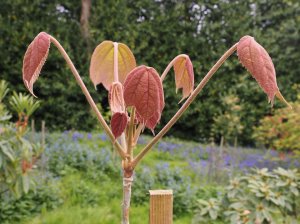
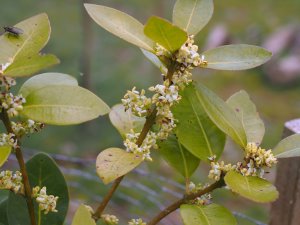
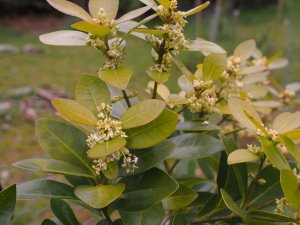
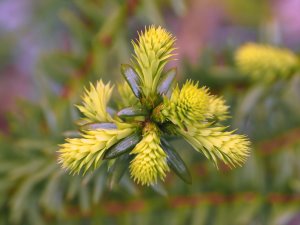
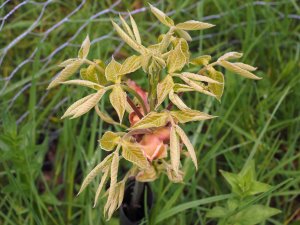
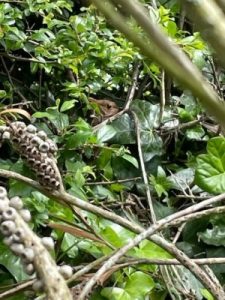
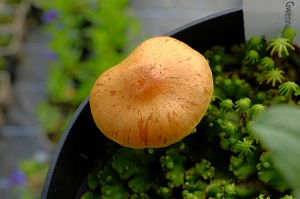
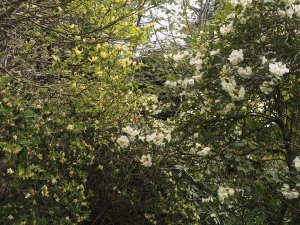
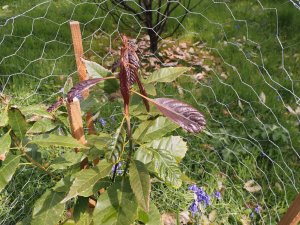
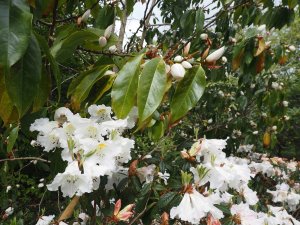
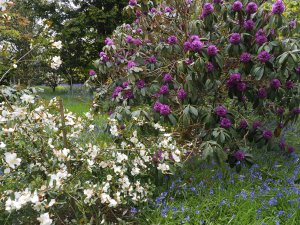
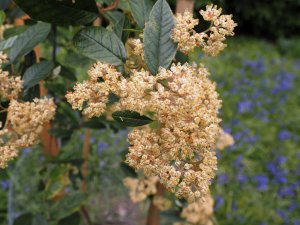
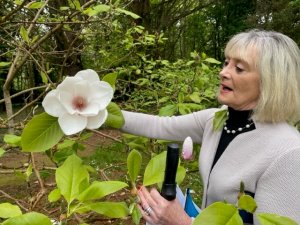
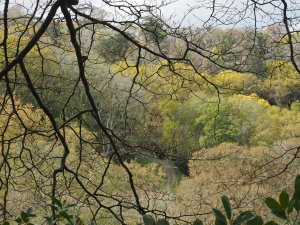
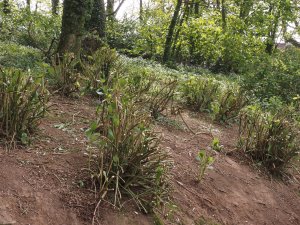
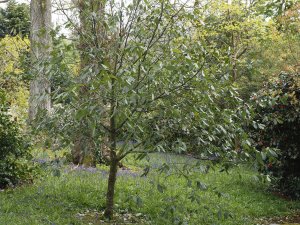
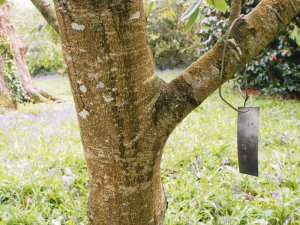
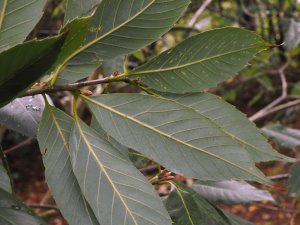
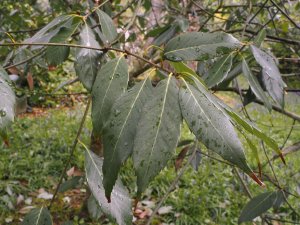
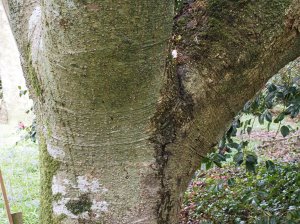
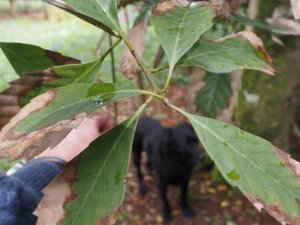
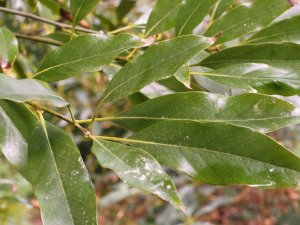
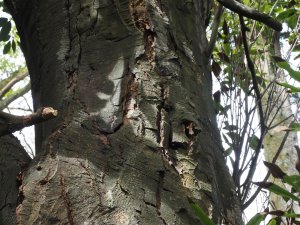
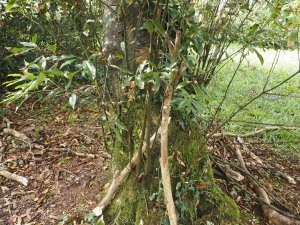
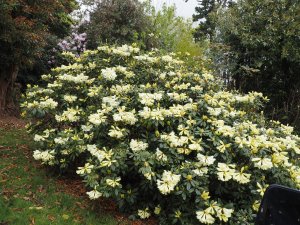
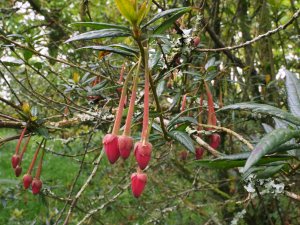
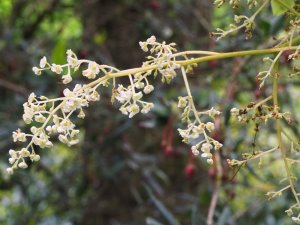
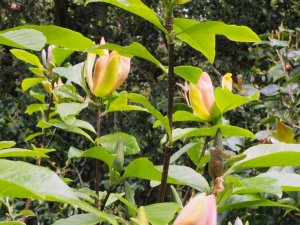
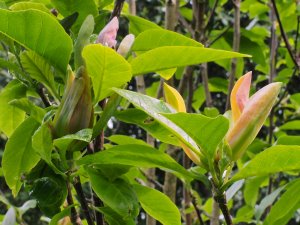
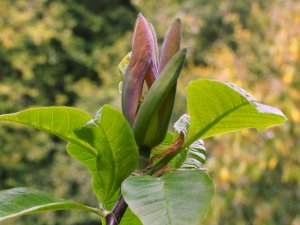
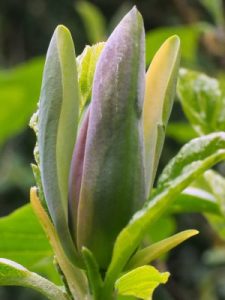
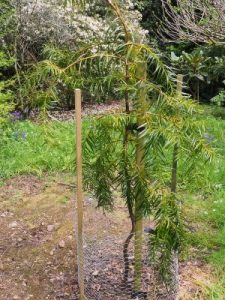
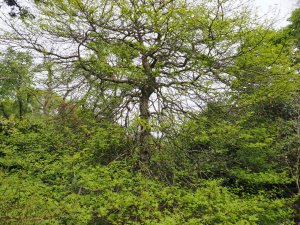
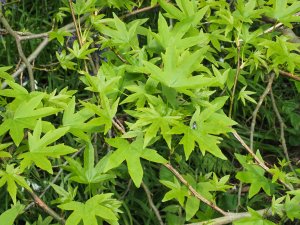
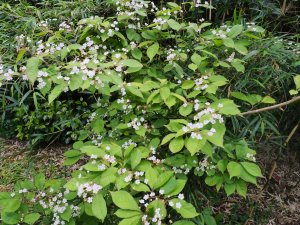
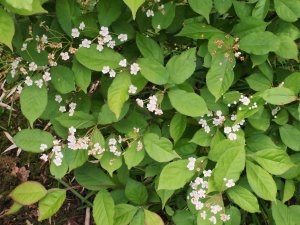
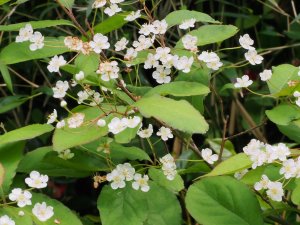
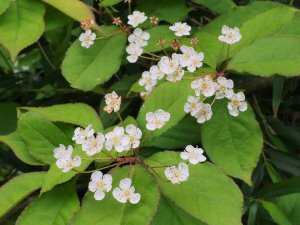
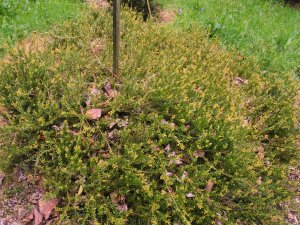
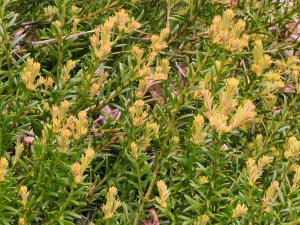
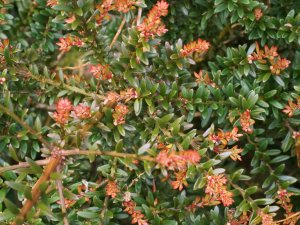
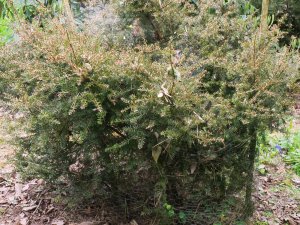
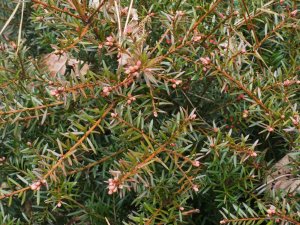
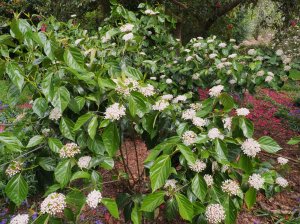
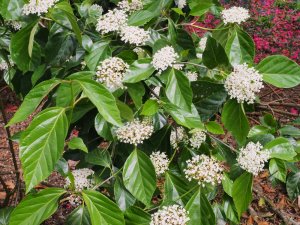
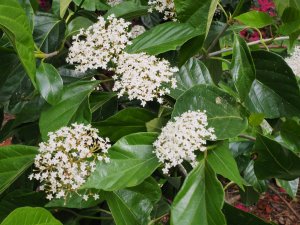
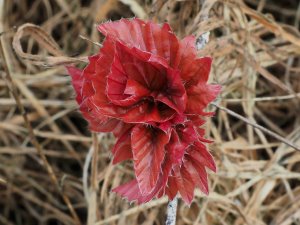
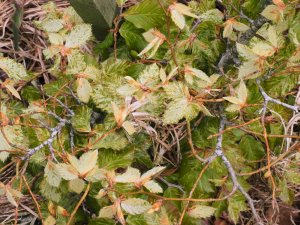
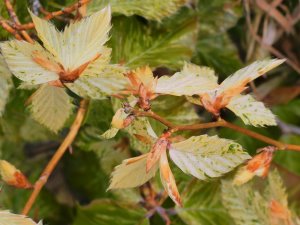
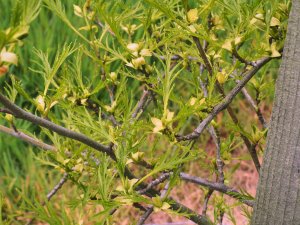
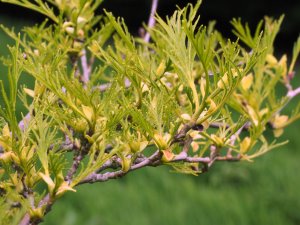
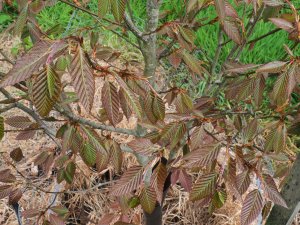
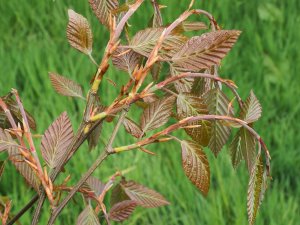
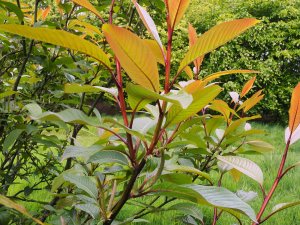
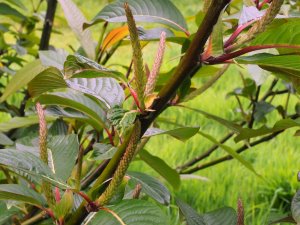
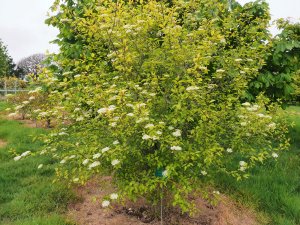
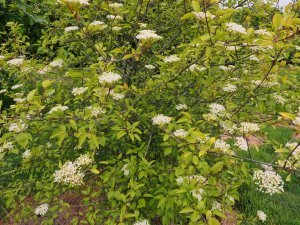
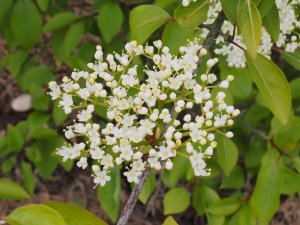
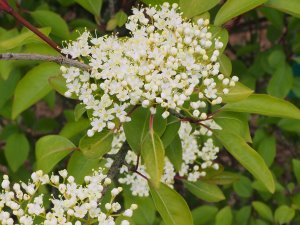
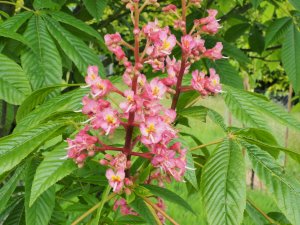
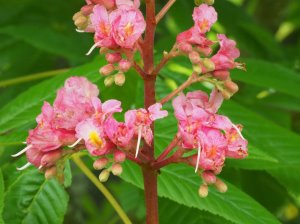
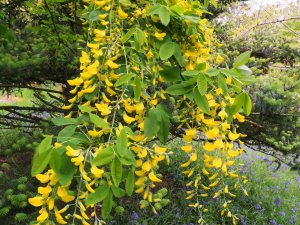
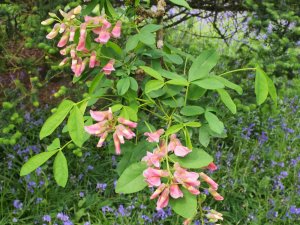
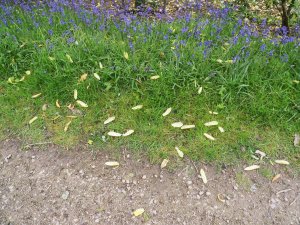
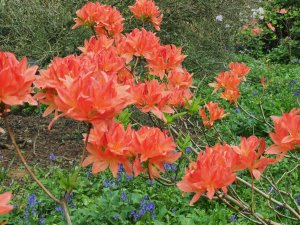
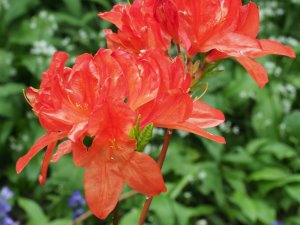
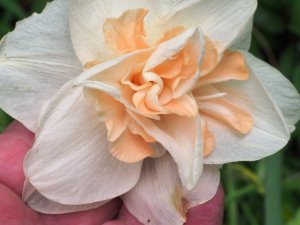
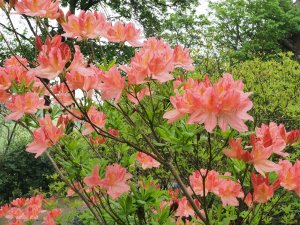
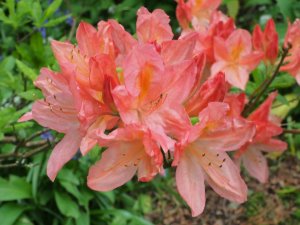
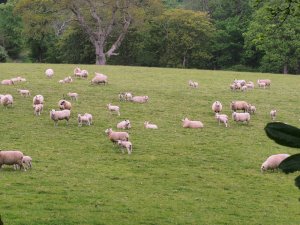
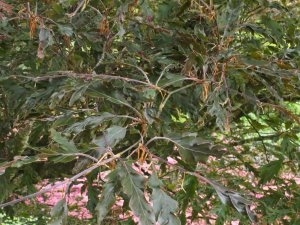
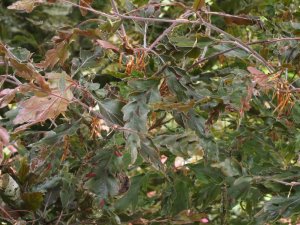
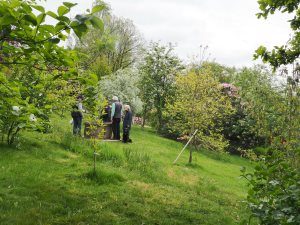
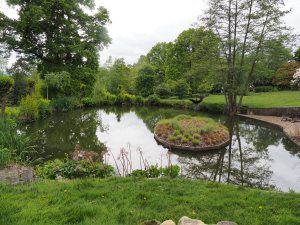
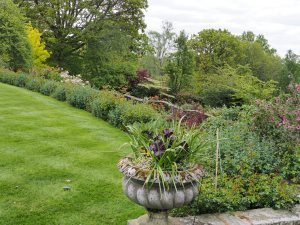
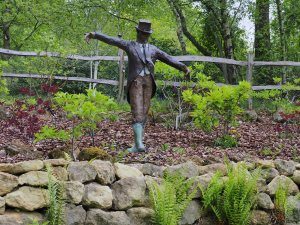
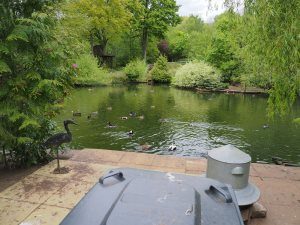
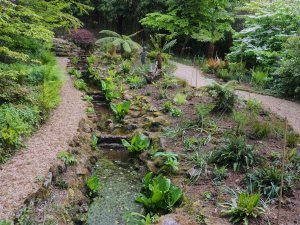
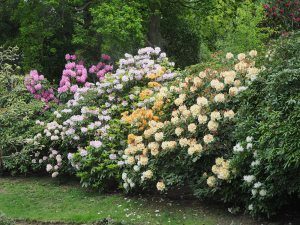
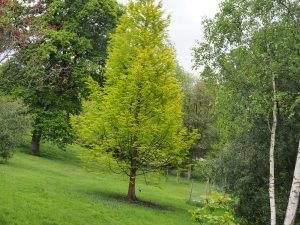
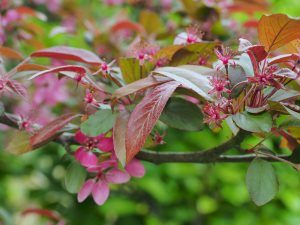
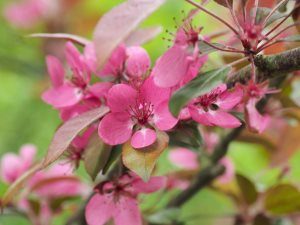
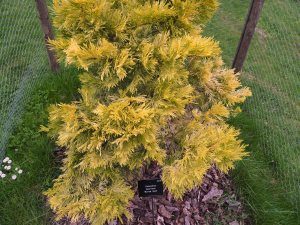
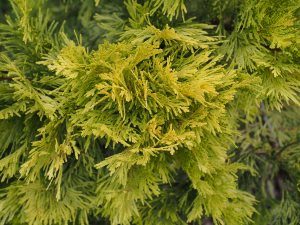
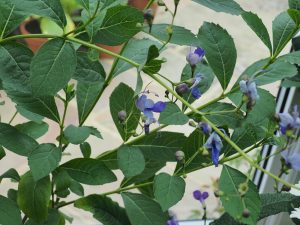
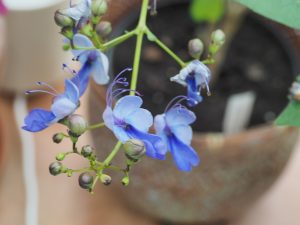
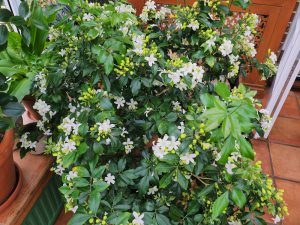
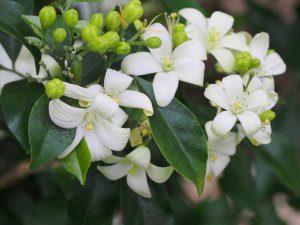
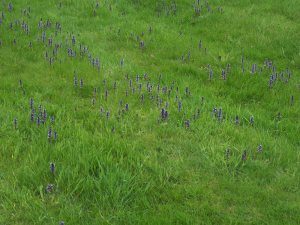
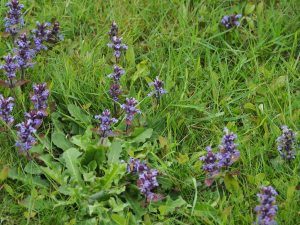
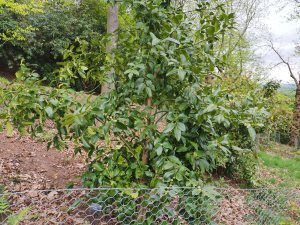
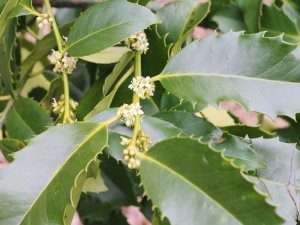
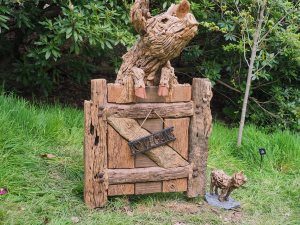
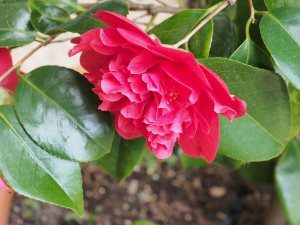
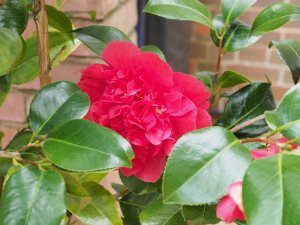
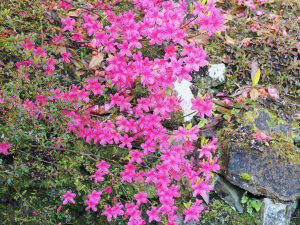
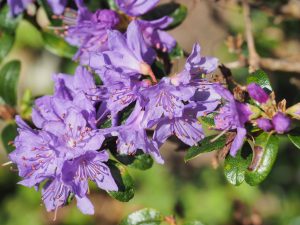
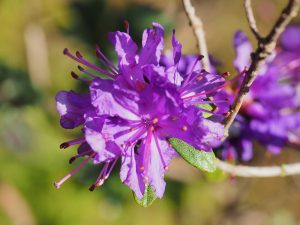
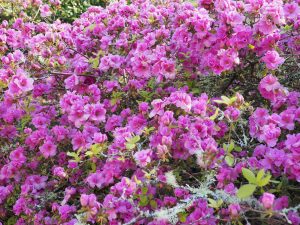
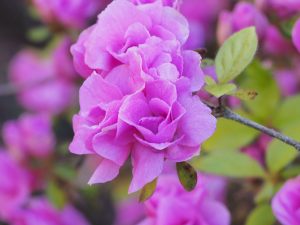
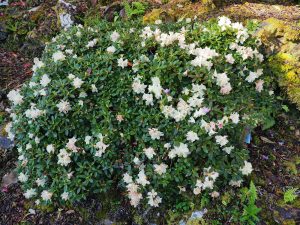
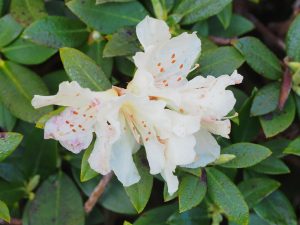
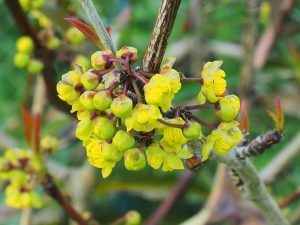
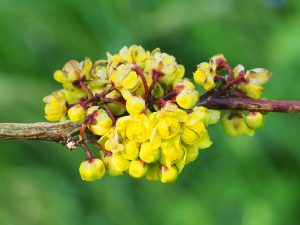
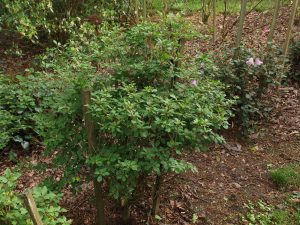
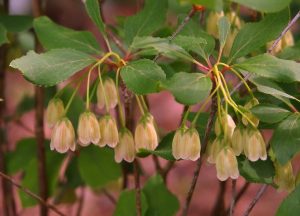
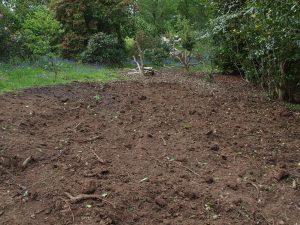
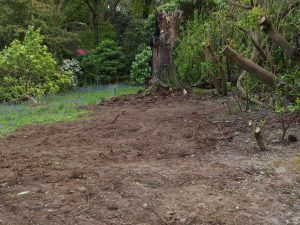
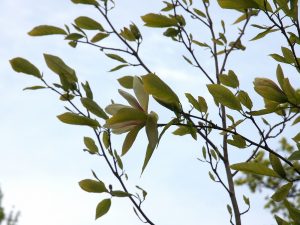
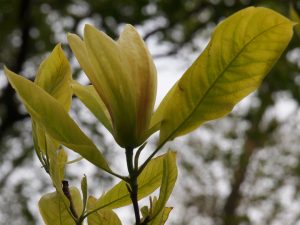
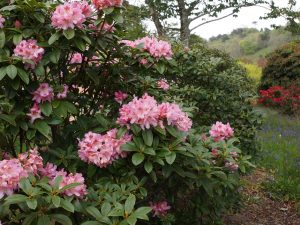
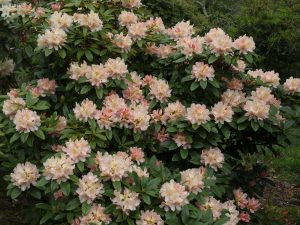
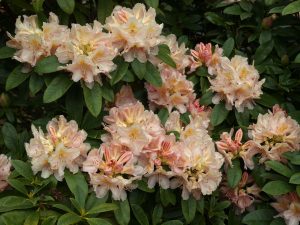
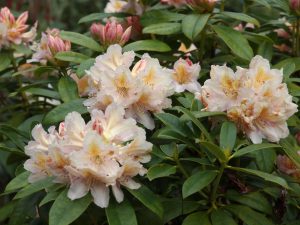
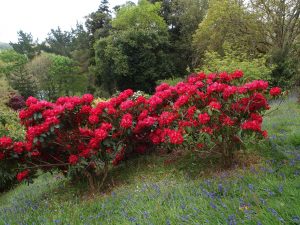
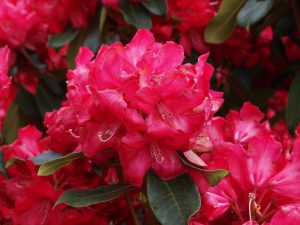
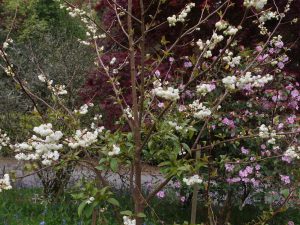
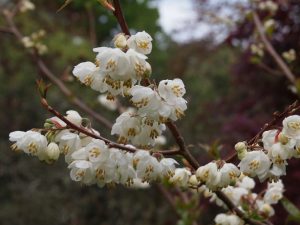
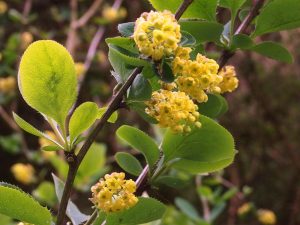
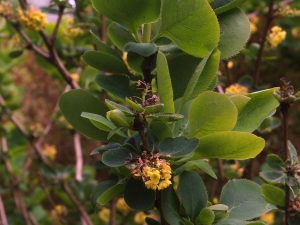
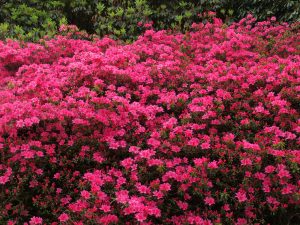
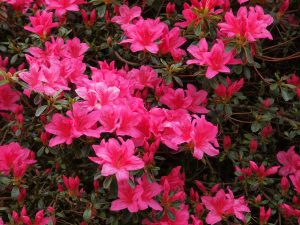
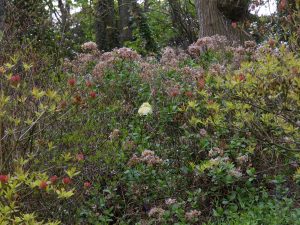
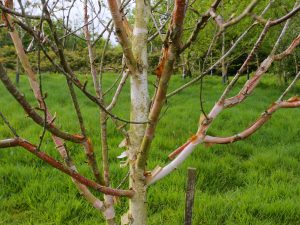
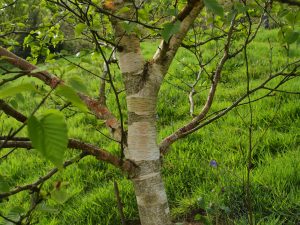
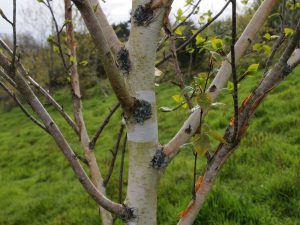
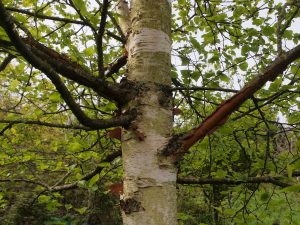
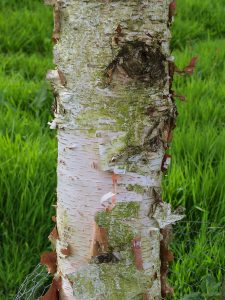
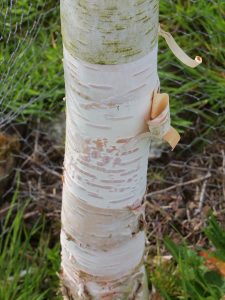
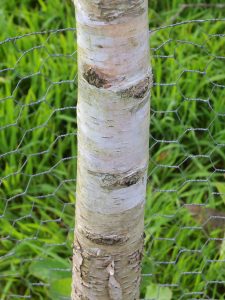
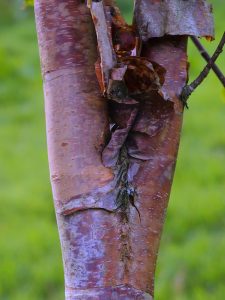
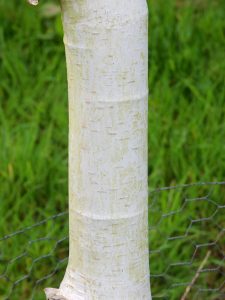
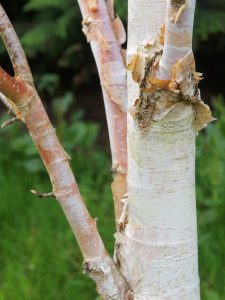
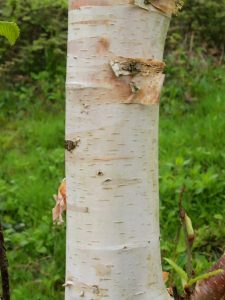
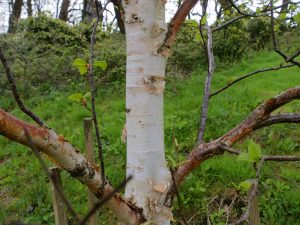
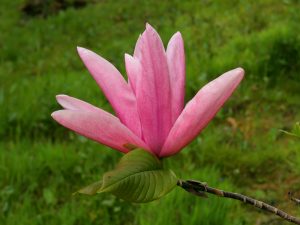
Really, your third Quercus acuta doesn’t look like…leaves too long, not so stout as they should be.
Podocarpus parlatorei on the other hand does look like it should, although Podocarps are difficult to tell apart…like oaks. A rare species in collections (and nature, too), from Bolivia and north-western Argentina.
Your unnamed, odorous conservatory plant could be Murraya, I forgot the species. Rehderodendron macrocarpus is nice, even within its styrax-relatives, but I fear somewhat choosy (also like its relatives), maybee it flourishes in a sheltered valley, I’d like to give it a try.